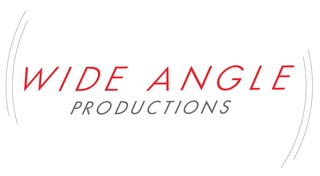“You keep using that word. I do not think it means what you think it means.”
-Inigo Montoya: the Princess Bride
Live
Live Live
Live to tape
As Live
Plausibly live
Live Stream
Live has become quite complicated. Or more accurately, it often needs clarification.
At its core… live means the action (performance, event, competition, show) is unfolding in real time (generally in front of an audience).
Where this gets complicated and needs greater clarification is the “gap” between the action and the audience.
LIVE LIVE
The Super Bowl is live. The action unfolds at the same time for the participants and the viewers (of course the tv viewer is seeing it slightly delayed from the people in the stands). When someone says live live they mean, live action being broacast live.
LIVE TO TAPE
Ignoring that tape is no longer a thing. The Daily Show records live in front of a studio audience at 5pm, but broadcasts at 11pm (well, pre covid). For the TV audience the show is live at 11pm, but it's not live live. Also, the show may well have been lightly edited between 5pm and 11pm. Recorded live (some audience was live live) and recorded for later playback. The later audience is watching a recording of a live event and while it may feel live live, It’s not.
AS LIVE/PLAUSIBLY LIVE
This is the same as live to tape, but the creators don’t tell the audience. This could be segments of a show or an entire event. The Olympics often do this with a wink… the gold medal game is shown at 8pm EST when in fact it was played 5 hours earlier and we all “pretend” not to be able to know the outcome before it is shown “as live”. This is less common with major events but happens more often than one might expect. A surprising amount of live stream content is actually pre-recorded content played out “as live”.
LIVE STREAM
The “live” here really refers to the audience’s perception of seeing it unfold. The stream really refers to the method of delivery - over the internet. It mostly means broadcast over the internet and is hoping to create appointment viewing (see below).
Not everything that’s part of live is live. Not everything that “feels” live is live.
Once you get into broadcast (or live stream)… there is a lot that fits inside live that isn’t live at all. The nightly news is broadcast live but contains “packaged” material that was pre-recorded (sometimes that packaged material is played as plausibly live). Premiers of a show can feel live as we are all seeing it unfold for the first time together, but it's recorded content.
Appointment viewing
A show that plays at a specific time, you must be at your screen to watch. A premier of a recorded show is not live, but it unfolds for the audience in real time like a live event. Live broadcasts are appointment viewing, appointment viewing may or may not be live. Popular shows (think Game of Thrones finale) first broadcast are appointment viewing. Major events (think the Super Bowl) are appointment viewing. Yes, you can watch them “on demand” later but, the experience is better when it’s seen at the same time as everyone else.
Live Streams vs Zoom
Live Streams (ie Facebook Live) can be a broadcast of a live live event, but due to the technology is somewhat delayed (usually somewhere between 4 - 30 seconds) and does not allow for the same level of audience interaction with the event (comments yes, asking a question on camera no). Zoom (and similar) allow for direct audience interaction, creating more of a “live” feel for the audience. That said, the content being presented on Zoom may or may not be live live (mostly it is).
NOT LIVE
Events that are recorded and played back are not live. Video on demand is not live (think Netflix). But, a replay of a live live event can feel live to the viewer. For many projects this “live feel” is the goal (think stand up comedy specials).
More about packages
When a prerecorded segment is played inside a live live event, it's generally referred to as a package. For the audience it’s still part of the live live show (think Saturday Night Live when they run a sketch that was clearly pre-recorded to buy time to set up for the next live live segment).
For better or worse, when working on a project, live often needs clarification. From a producing standpoint it’s very important to understand what you want from live to manage risks and achieve the best results.
